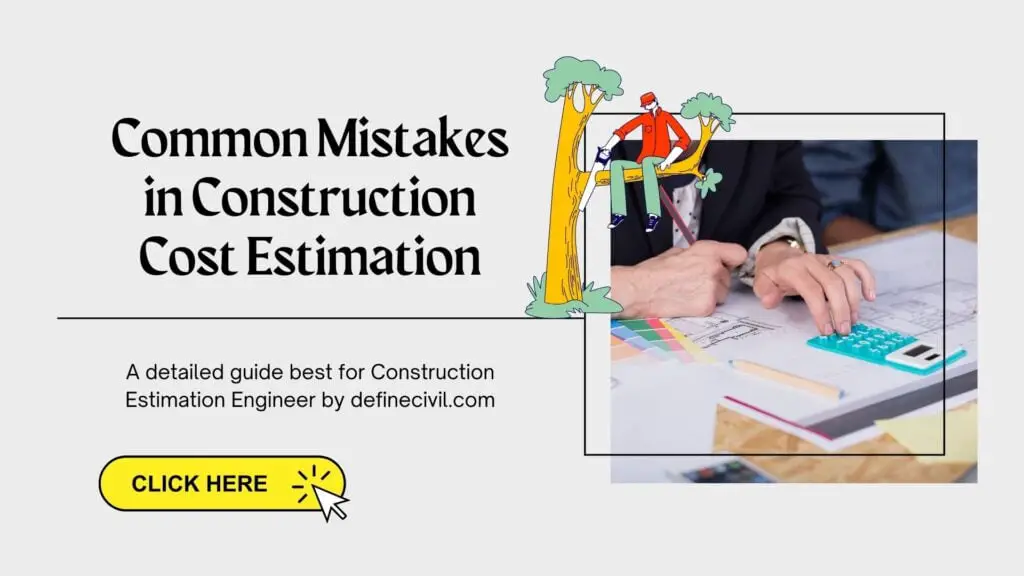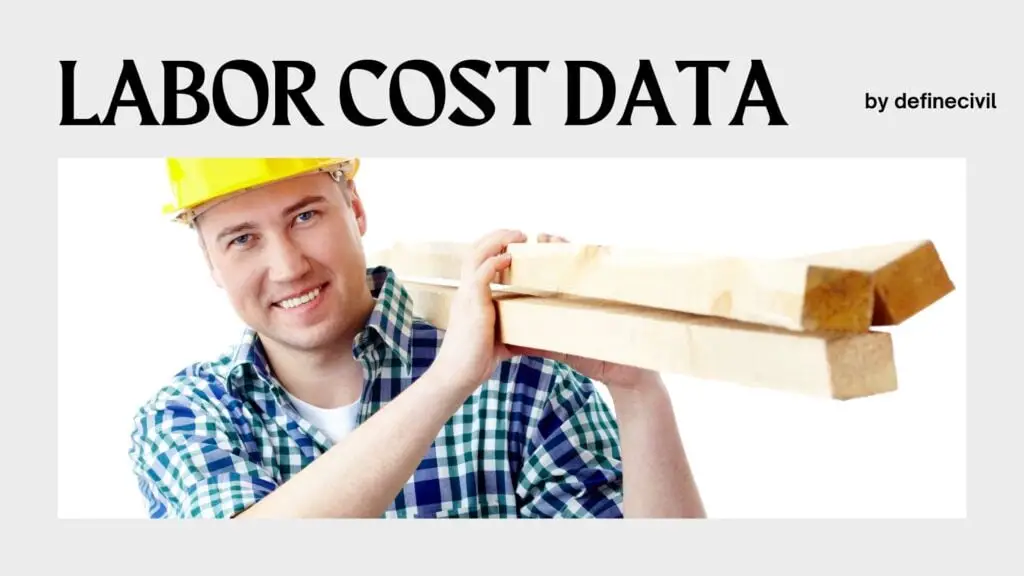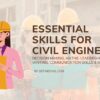Construction cost estimation is an important phase that provides an in-depth description of the project and the budget needed for the project. The clients use this projected cost data to evaluate the feasibility of the project. They also utilize this information to obtain project funds and allocate the same for future use.
A detailed construction cost estimation process includes prediction of the quantity, cost, and price of all the resources required to complete a job within the project scope. The resources include time, manpower, supplies, and the materials. So, you see construction cost estimation is quite daunting and complex.
What is Cost estimation and why it is important?
It is really an art, rather than science. You need to take care of a lot of factors to ensure use of accurate data and arithmetic manipulation. Inaccurate cost estimation would result in cost overruns and eventually the contractor has to cut down the profit margins to meet the requirements. The estimators has to be fully versed with the steps to access market conditions, pick every bit of detail, and collaborate with the client to understand their requirements and blend that well with the project specifications.
A series of unprofitable projects due to bad estimation process would compel you to close the doors for good. So, if you want to stay in business and enjoy healthy profit margins, you need to avoid common mistakes in construction cost estimation. The best estimates are detailed estimates. So, you need to focus on as minute detail as nailing or accurate labor data and material cost. You need to understand labor productivity to get precise takeoff measurements and factoring in things like contingencies and overheads.
But even if you’re an experienced estimator, you still can miss a detail or two. That’s where you need to know typical mistakes in construction cost estimating to avoid future nuisance and cost overruns.
You can use this guide to emphasize on specific areas and avoid mistakes in construction estimating. So, let’s delve in:

Typical mistakes in construction cost estimation
1. Not accessing the site conditions
Let suppose you’ve been bidding on lawn mowing jobs for 5 years, you still can’t bid accurately on a new project without visiting the job site. Every project comes with unique variables that can drastically impact your overall cost estimates.
Hence, most clients provide bidder the opportunity to have a pre-bid meeting and visit the jobsite before submitting the bid. That’s rightly so because no two jobsites can be identical. There can be unknown site conditions that need to be factored in the overall estimate.
When on a job visit, make sure to take measurements, inspect the topography, and take soil samples for future reference. You need to evaluate the access and road traffic condition to the site as it may impact your material delivery and storage requirements.
Also Read: Construction Estimation Process Tips for Accurate Estimates
2. Mistakes in measurement takeoffs
You’ve got the blueprints; all you have to do is to take accurate measurements. But with so many detail drawings and a lot of components, one can mistakenly take inaccurate takeoffs. Your estimate relies heavily on the measurements you take. If the measurements are wrong or incomplete, it can quickly screw up your estimates. So, try to take accurate takeoffs. You need to take your time in understanding the project requirements and determine the exact quantities of the materials and supplies. Your labor and resources costs also rely on the takeoffs.
3. Inaccurate labor cost data and wrong assessment of productivity
Estimating labor cost is a crucial yet the hardest part to nail down accurately. From your overall project cost estimate, the labor cost takes a big share. You need to take care of the factors like availability of labor, experience required for the project, wages, and their productivity.
You need to access the time to complete a project in your mind before reckoning the number of labor required. A tight deadline would eventually need more number of experienced labors. Hiring labor with low salary would not have good experience and would eventually cause delays that will hurt your bottom line. So, try to estimate man-hours you need to perform a task and use that as a guide to estimate overall labor costs.
4. Inaccurate price data for materials and supplies
Estimating materials and supplies cost is the hardest part in cost estimation. Sharing the biggest part in the overall estimate, it is crucial to use accurate price data for all the materials and the supplies you need for the project. Material prices rely heavily on market trends and they tend to fluctuate overtime. So, if you’re bidding on a 4 years long project, you should factor in the escalation that will happen over the course of project duration. The demand for a material in market, and the tarrifs, and taxes are uncertain and will fluctuate overtime.
So, if you’ve got a better relationship with your budging product manufacturer and supplier, you can drag that to your benefit. They’ll help you in locking the prices and put together the same data in the project estimate. They can also guide you for alternate material that might be a better fir for your project.
You also need to make sure, you choose a supplier that can fulfill your project requirement and can supply adequate quantities. The delays caused by shipment delays can be embracing and will eventually hurt your bottom line.
Also Read: Quantity Surveying Methods that can give you overnight success
5. Relying on an uneducated guess
One common mistake in construction estimating is making an uneducated guess rather than making informed or tracked cost estimation. In estimating labor costs, the estimator should collect relevant information about the material and supplies to be used and should evaluate and consider the impact such supplies and materials will have on the project.
So, try to track your job costs on every project and use this data as a guide in estimating costs for labor, material, and equipment. You can’t have accurate estimates or bids by gambling and relying on uninformed or uneducated guess work. You need to factor in the cost data based on actual or current market condition. A lot of estimators forget to factor in overhead or soft costs like permitting and inspections. You can access the availability of supplies and equipment to factor in the subletting cost or rental costs.

6. Not factoring in risks and contingencies
Construction projects are unique and challenging, by all means. So, the risk that comes with the project has to go somewhere in the cost estimates. Make sure to complete risk assessment as part of the estimating process.
For example if you’re bidding on a job for cleaning exterior façade of a building. The cost to clean the first floor would be comparatively low as compared with the cost to clean 30th floor windows and doors. So, try to identify a project and pass on the risk to the bid you submit. Same stands true with the contingencies.
Failing to do risk and contingencies assessment would be detrimental to your business when things would go wrong. You can go like this; first access the risk and enlist the steps you need to take to mitigate that risk. Once you’ve enlisted the steps, associate the cost to every step and estimate the risk mitigation cost.
7. Not reviewing the estimation work
To err is human. So no matter how vigilant and sharp you are at reckonings, mistakes can still happen. The best way to go at it is by reviewing every estimate before finalizing the bid. Mistakes like taking wrong units, omitting scope items, inaccurate measurement, or using wrong calculations can spell big trouble to your project. So, once you’re done with the estimate, take your time in carefully reviewing the work. You can also let your friend or a subordinate to review the work. They can double check the measurements and the math calculation to be correct.
The rule of thumb for bid submission is – never rush through the work. Yeah the bid deadlines are there, but you should plan your estimation work to get adequate time to review and make up your bid together. Your profit margins rely heavily on the accurate estimation work. If you’ll underestimate the bid, you may have to cut your profit margins in order to be able to complete the work.
Hire a professional company and rely on latest tools
So, you see there’re number of construction cost estimation mistakes you can easily make. The best way to tackle such issues is by using modern and innovative cost-estimating tools for the job. You can obtain accurate construction cost data ready to go in your next job estimate.
A large number of construction estimating firms offer their services online. Many construction estimating contractors also provide free training. However, it is important to choose only reputable construction estimating firms. It is not easy to find out if the firm is qualified enough to get the job done. To help you out in this regard, below is an informative article on construction estimating.
The bottom line
So, you see estimating is one of the most difficult jobs in construction industry. Yet, it is one of the most important and crucial aspect that can make or break your project. If you’re a contractor, your profit margins rely heavily on accurate estimates. An experienced cost estimation company would help you with accurate estimate so your actual cost will match up with the preliminary estimated cost.



















